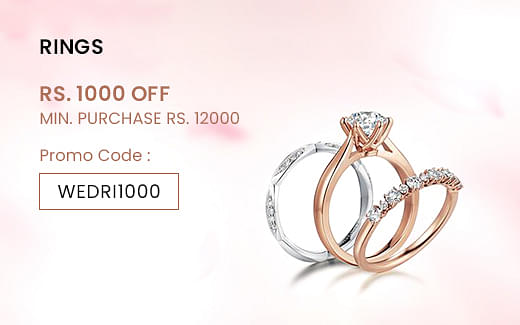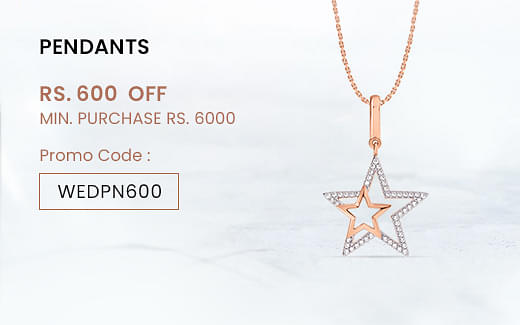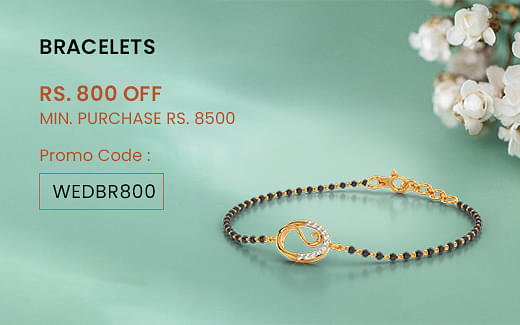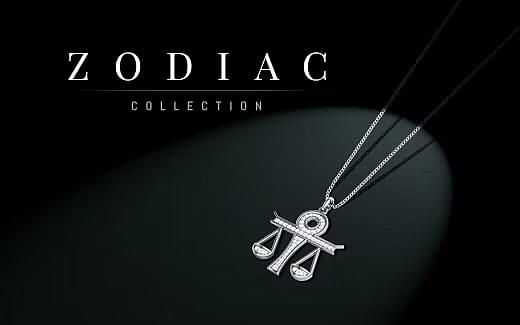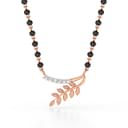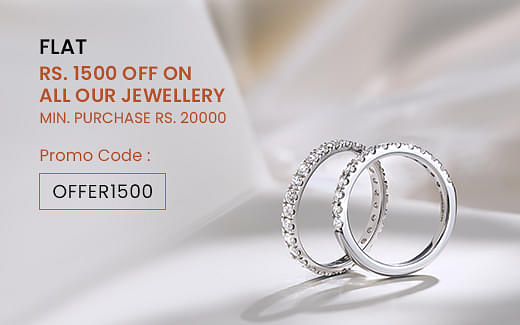Free Insured Shipping Nationwide | 1500+ latest designs
Available on Amazon India
Diamond Education
Gemstone Education
Metal Education
Jewellry Guide
Pearl Education
More Guide
Policies
Diamond Clarity
Diamonds are formed deep within the earth, under the influence of extreme heat and pressure. Hence, every diamond contains birthmarks. These birthmarks simply refer to the imperfections that are associated with a diamond and they are bifurcated in two types .
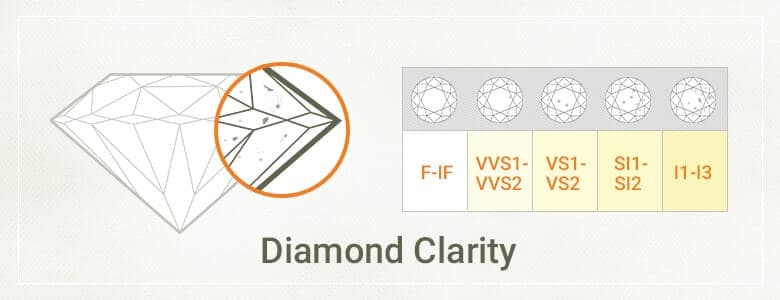
A) Blemishes
Imperfections that are present on the surface of the diamond are called blemishes.
B) Inclusions
Imperfections that are on the inside of the diamond are known as inclusions.
The degree to which these imperfections are present reflects on the grading of a diamond's clarity. The diamonds that contain large number of blemishes or have inclusions present in them in significant amount have less brilliance because these flaws obstructs the path of the light going through the diamond
The position of inclusions plays a significant role in determining the quality of a diamond. Therefore, the diamond cutters try and cut the diamond in a way in which the inclusions are not visible through the table of the finished diamond. Under the bezel facets or near the girdle are the preferred positions of the inclusions because they are difficult to see there.
Grading for clarity of almost every diamond is done using the 11 point diamond clarity scale that is created by the GIA. For grading the clarity of a diamond the GIA considers every flaw visible under 10x magnification. The test of the number, size, color and the position of the flaw is done.
If you have any more or a specific question regarding the clarity education of a diamond or any other diamond aspect then you are requested to ask our diamond expert (Hyperlink- contact). A diamond expert will personally help solve all you queries. You can chat online or email us at: (Mail ID.)
Flawless, Internally Flawless (FL & IF)
When seen under 10x magnification there are no blemishes or inclusions These are extremely rare and the ratio of getting the diamond graded under this rating is 1:5000
When seen under 10x magnification only blemishes are present and inclusions are completely absent
It is quite similar to a flawless diamond but when viewed under magnification a slight blemish can be viewed. Only three percent of the jewelry quality diamonds are rated as IF

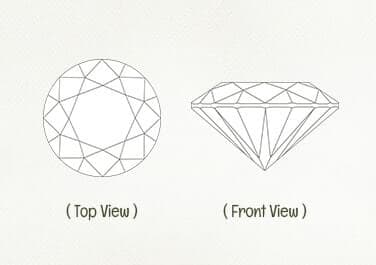
Very Very Slightly Included (VVS1 & VVS2) & Very Slightly Included (VS1 & VS2)
When seen under 10x magnification inclusions are difficult to identify
Unless viewed under magnification the inclusions cannot be identified. In VVS1 the inclusions can be seen from the pavilion while for VVS2 it is visible from the crown
When seen under 10x magnification the inclusions can be observed quite clearly but are negligible
Inclusions are almost invisible to the naked eye however very rarely someone could identify the inclusion with the naked eye if the conditions are ideal

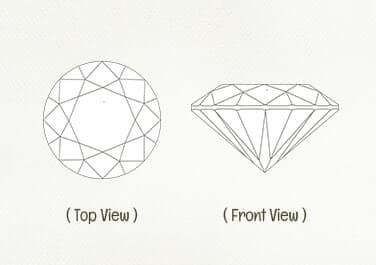
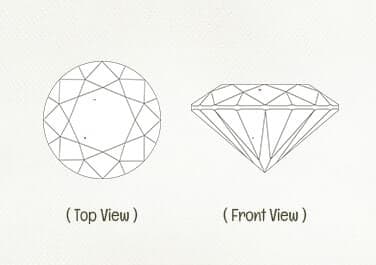
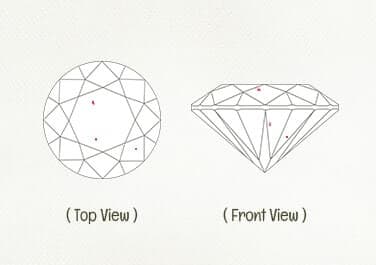
Slightly Included (SI1, SI2)
When seen under 10x magnification inclusions are visible
In SI1 the flaws are often invisible to the naked eye however, it is the lowest grade with flaws. SI2 inclusions are visible to the naked eye but requires close inspection
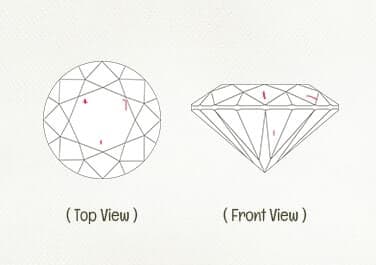
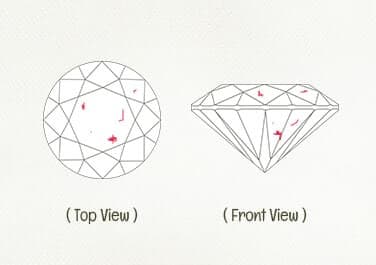
Included (I1, I2, I3)
When seen under 10x magnification the inclusions are very obvious and affecting brilliance and transparency in the process.
I1 diamonds have inclusions that are usually easily visible to the naked eye.
I2-I3 diamonds have inclusions up to a level where the diamonds durability is affected
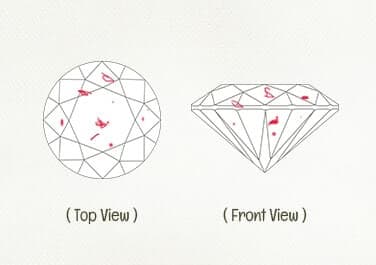
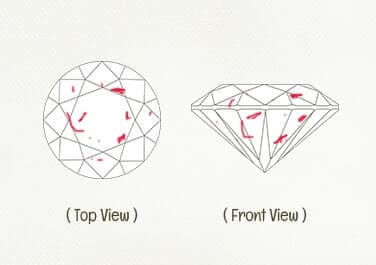
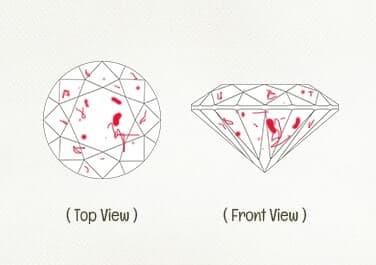
Diamond plot
The clarity of a diamond is always subtle and a mere photograph cannot cover all of the subtleties of it hence the GIA uses a diamond plot to map the exterior and interior flaws of the diamond. The graphical representation of every flaw that bothers the clarity grade of the diamond is called a diamond plot.
These flaws are identified under 10x magnification by a skilled diamond grader. The plot shows the position of the flaws and the type of the flaw but it is the diamond clarity grade that communicates the visibility of the flaw. This is because two diamonds might have same plots but different clarity grades which reflects the actual visibility and severity of the recorded flaws.
Caution
On an average 1 in 3 diamonds are enhanced or treated in one way or the other before they are sold. There are numerous number of techniques that can be used to improve the natural clarity if a diamond artificially. Perrian will like to ensure you that all our diamonds are 100% genuine and to support our claim we give you an EGL certificate with any purchase you make.














